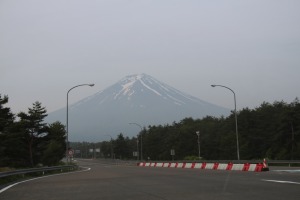There’s an old saying in Japan: “A wise man climbs Fuji once, and a fool twice.” Mount Fuji has been on my bucket list ever since the first time I was in Japan in 2004. At the time, I heard a story from a friend who heard it from someone else (and so forth) which all but guaranteed that I’d make the trek someday:
When you set out to climb Fuji, you can buy a walking stick at the base. As you ascend the mountain, there are a number of stations that you can stop at and each one will burn a different design into your stick. Then by the time you finally get to the top, in addition to having just climbed a legitimate mountain, you will also have a resplendent souvenir to take home as a bonus.
I loved every part of that story and one day while substituting in the Hikari No Mori branch, I thought I caught a glimpse of one of the sticks on the way out of the teacher’s lounge. It wasn’t until I was out of the mall that it hit me what I thought I had seen and by then it was too late to run back and examine it since I had a train to catch. In the end, the walking stick story was true but with a few caveats that I wouldn’t learn until years later when it was time to finally make the climb.
Making Preparations
Thankfully, Fuji isn’t Everest or K2. You don’t need any kind of special climbing equipment to get up Fuji. It’s classified as a “steep hike” so while you don’t need to spring for oxygen cans, ropes, or crampons, there are a few things that are a must. Good hiking boots, dressing in layers, plenty of water and energy bars, and SUNBLOCK (as I learned all too painfully) are mandatory.
If you are planning on starting from the very bottom and camping in one of the stations overnight, assume it’s going to be freezing. We did the hike on July 3rd and it was the first time in my life that I’d gone from upper-70s humidity in the morning to literal snow flurries in the early afternoon. The walking sticks were a lifesaver especially towards the top in the larger snow patches, when it really helped to plant them before each step to steady yourself.
There are four main paths up Mt. Fuji and each one started in a different prefecture. We chose the Fujinomiya Trail, which began on the south side of the mountain and is one of the most popular trails since it can be done in less than a day. Each path has different stations present starting with number one at the very bottom. From there, the elevation gradually increases as you walk through the forest and then picks up around station five. I would have loved to start down at station one but that would have required a two-day trek to the top and we only had time for a single day. So we did what most of the touristy hikers do and drove to the fifth station, parked there and then climbed the rest of the way.
During the official climbing season (which is to say, when it’s most ideal / safest to go up), all of the stations are open, and there’s even a ramen shop and a mailbox to send your postcards from at the summit. But we were a few weeks too early and the only station that was staffed was the sixth. Each other one on the way up (when we could even recognize them) was closed and looked like boxy and dilapidated metal sheds. This was kind of a bummer for two reasons:
- If something were to happen to us while climbing, there was nobody else above the sixth station except for fellow climbers. So no first aid, no water, no sure communications, nothing!
- Somewhat less critically, while we were able to buy our walking sticks at the sixth station, we couldn’t get them burned at each station above with the marking that I had heard about ten years ago. (AWW MAN!!!)
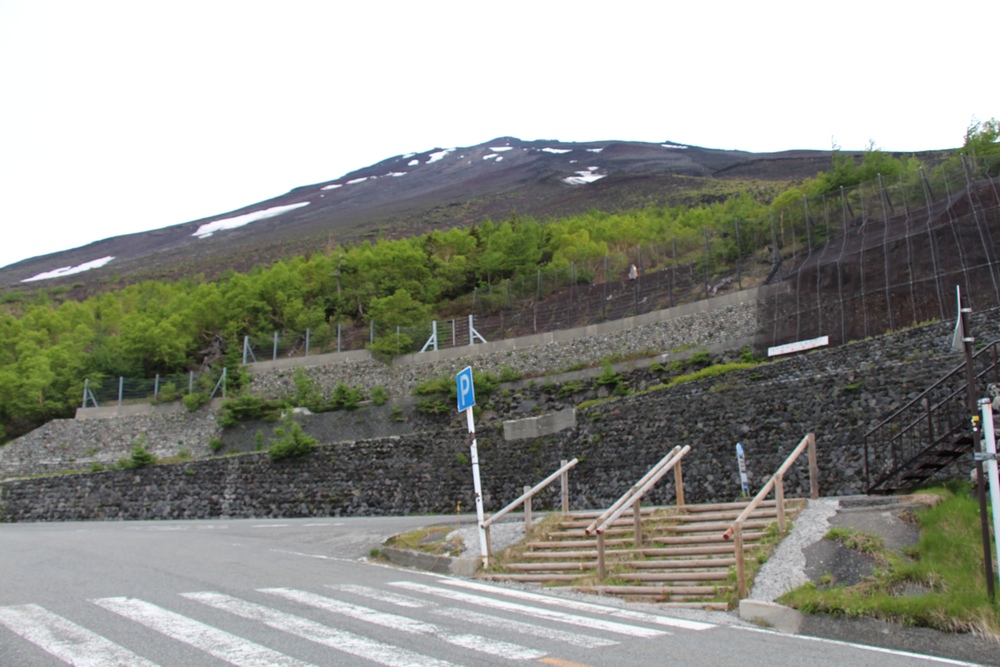

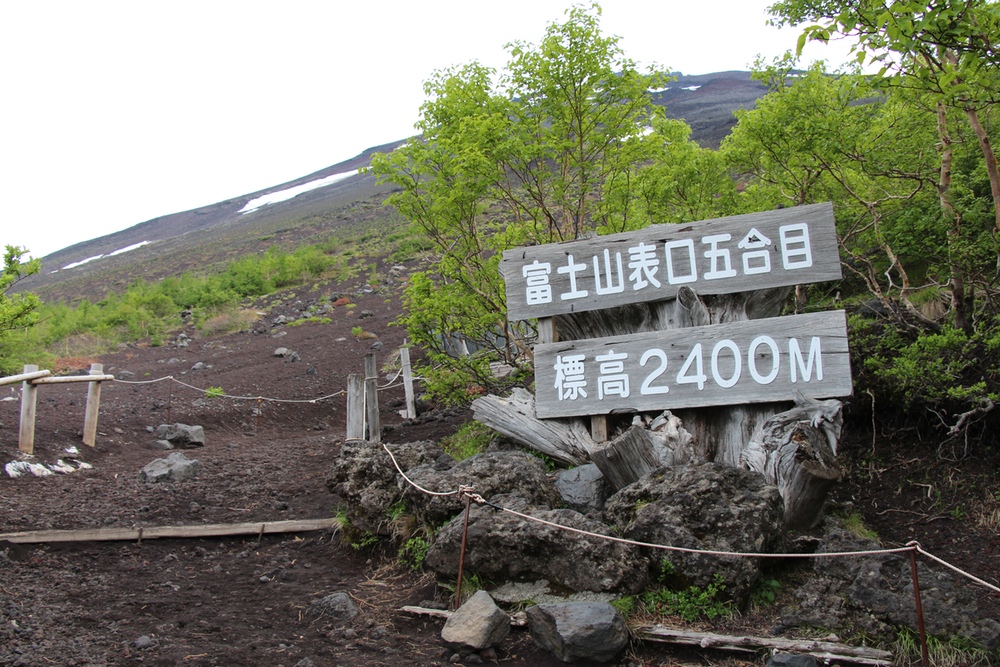
The Experience
The day started really early for us. In order to make it to the starting point for 6:00 AM, we had to leave Quinton’s house in a western suburb of Tokyo at 4:00 AM. After about an hour and a half in the car, we finally got our first glimpse of the mountain. My two fellow hikers remarked that it didn’t look so big, to which I responded, “say that again in six hours.” Following the signs for the Fujinomiya Trail took us through a few small communities, past a US military base, and finally through an insanely winding, roller coaster-like road up to our starting point’s parking lot.
Almost as soon as I got out of the car at the fifth station, something felt different. There are several tiers of parking lots and immediately after charging up a flight of stairs between two of them, it became clear that the air had significantly thinned already. I slowed down, realized that I’d better start pacing myself for the day, and then walked up the rest. The fifth station was at an elevation of 2,400 meters (7,874 feet) and that was just our starting point! The further up we went, the more pronounced it became until we were taking a mini break every five minutes or so near the top. Speaking of the top, that sat at 3,776 meters (12,389 feet), which meant that we had a lot of hiking to do!
Not everybody was affected by the elevation. Over the course of the day, we met a few dozen other hikers, most of which were elderly Japanese men. I was able to interview some of them in Japanese on the way up and for a few, this was their fifth or sixth time scaling the mountain. Needless to say, they zoomed right by us, some with nothing more than a light backpack and ski poles. I asked one man why he used ski poles and he said he thought that they were more efficient than my touristy walking stick (which he admitted was more traditional, however).
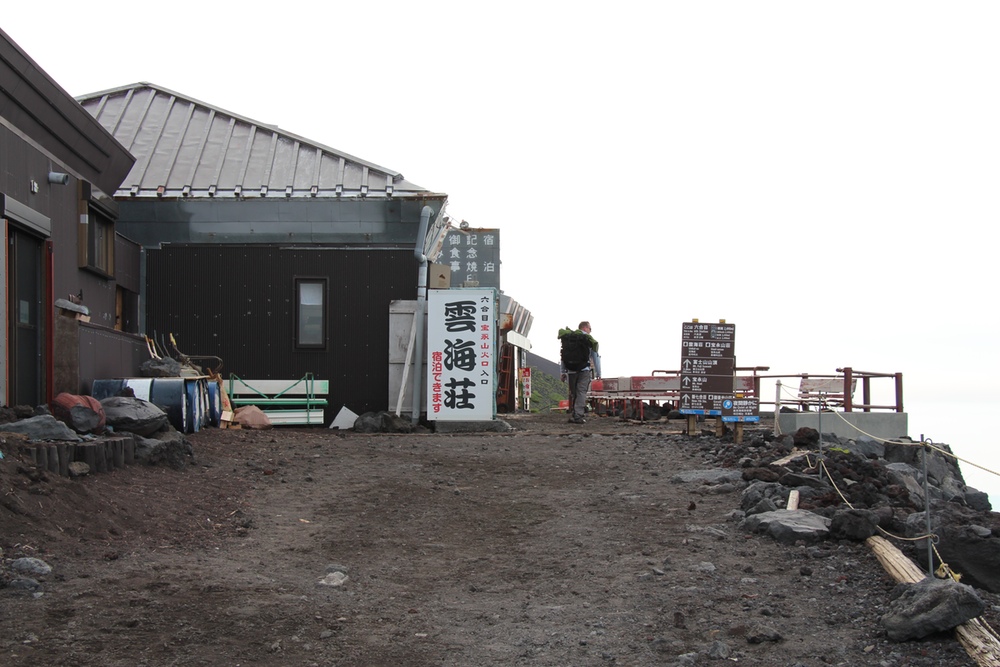
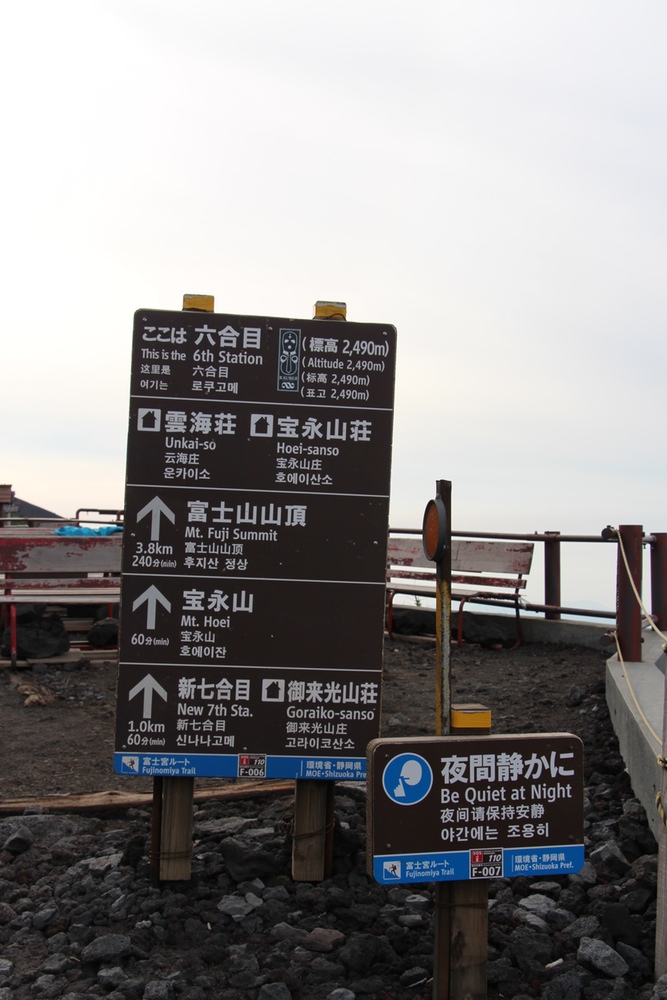
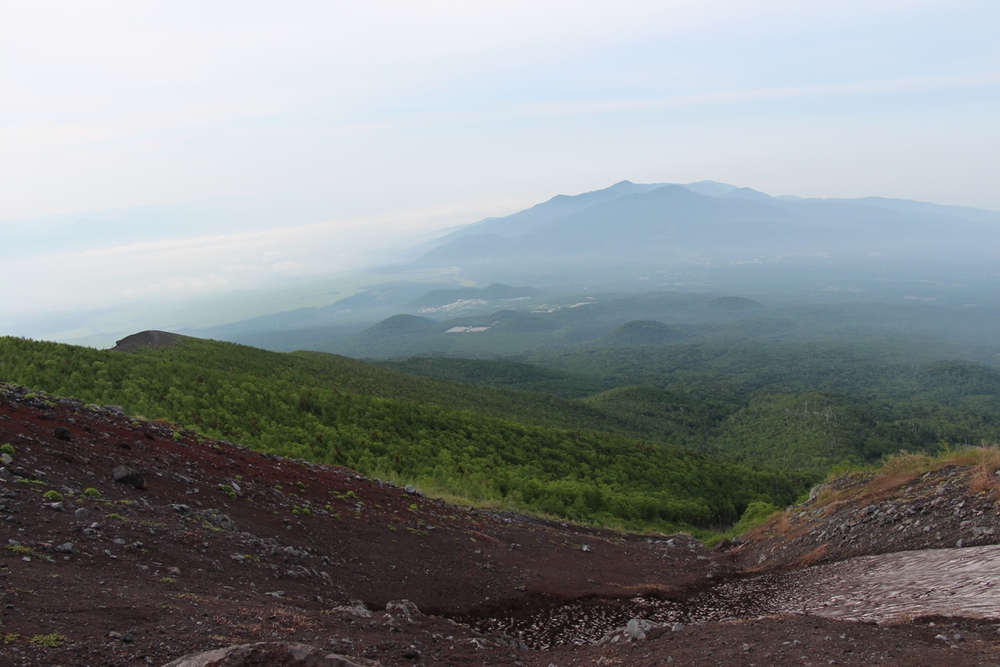
One thing that you can’t tell just from looking at a photograph of Mt. Fuji is what the trail is made up of. Most pictures show a reddish brown slope with some white at the top around the summit. In reality, there were at least four different conditions that we walked up in:
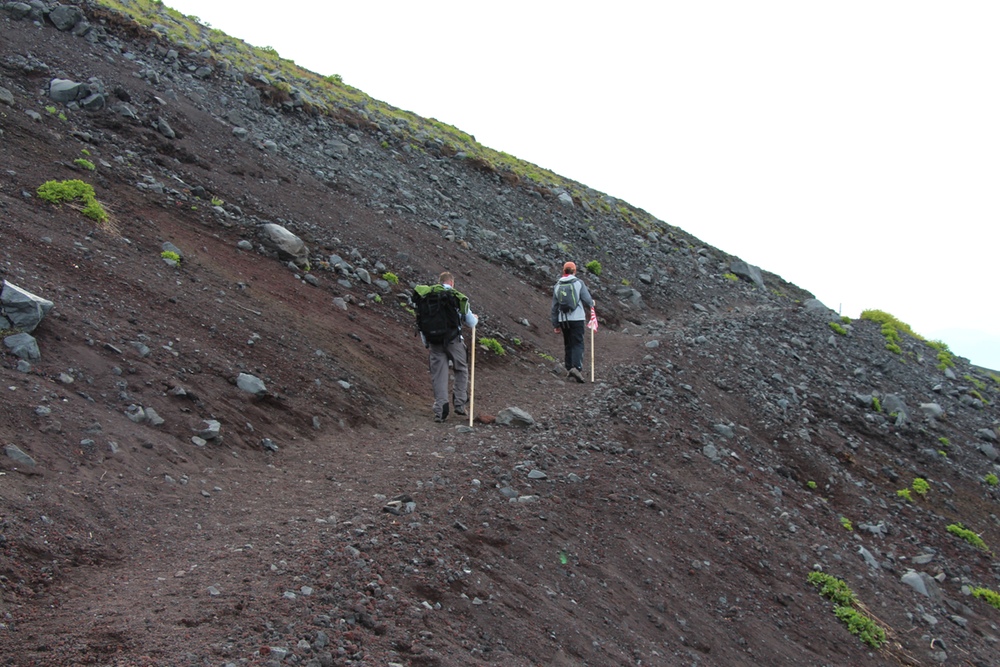
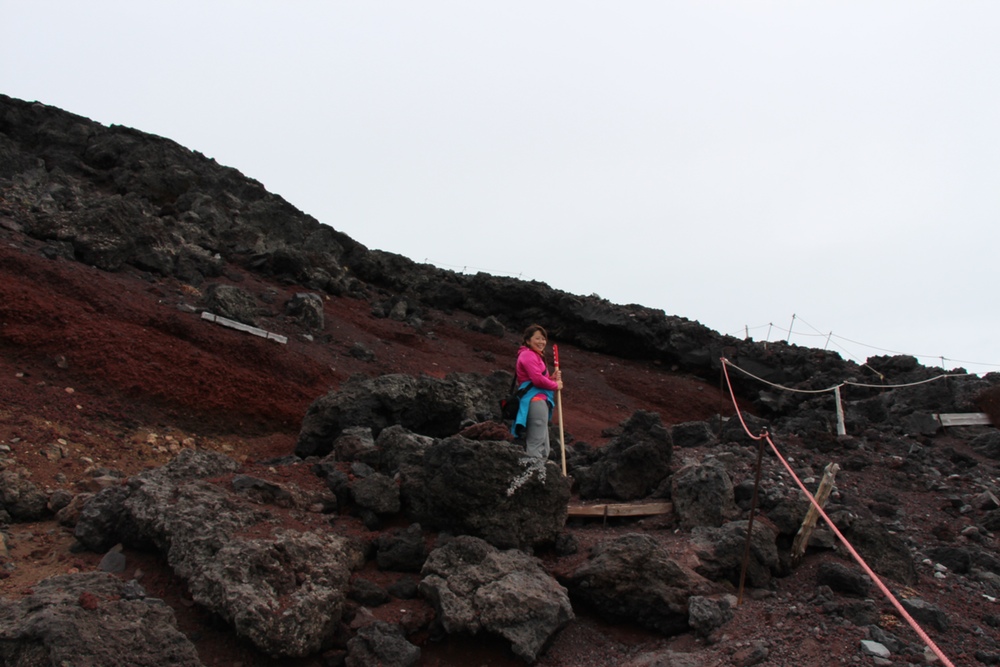
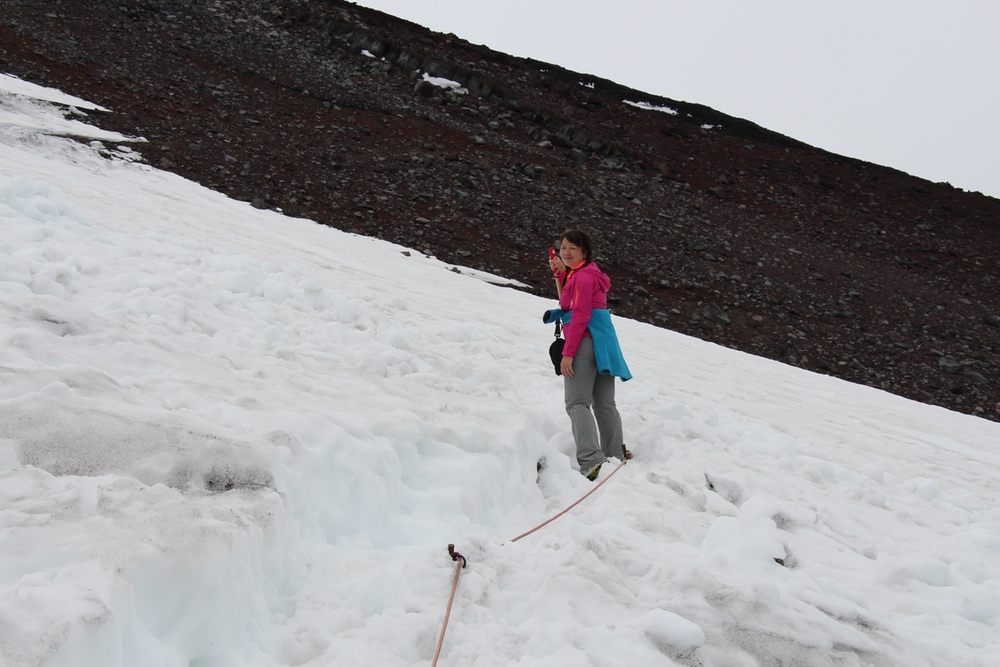

During the relatively few flat areas, the ground was packed dirt, which was easy to walk over. After the sixth station, we accidentally followed one flat trail the wrong way over to Mt. Hoei, which was definitely NOT the mountain that we were there to climb. After only going about 20 minutes out of our way, we realized the mistake and backtracked. It turned out that the way we should have gone was…
Over boulders of varying sizes. These made up most of the climb and it reminded me of the “Frodo and Sam endlessly climb over rocks” scenes of The Two Towers. For me, these stones ranged from walking up large steps to REALLY large steps that took some thinking in where you would place your feet. In some parts, it was even so steep that we’d need to grab onto rock and and hoist ourselves up. Fortunately at the times when the stones were really steep and there wasn’t an obvious way to scramble up over them, there were stakes in the ground that ran a rope along the path.
When we weren’t on the trail or climbing over rocks on the way up, there were the snow patches. The first one we came across was a little bit up from the sixth station and it was basically a stretch of dirty ice that we had to cross. Fortunately we had a rope to hang on to and it wasn’t too hard to get to the other side. I actually liked the next two snowy sections, since it broke up the monotony of the rocks a little bit and gave us something firm to plant our walking sticks into.
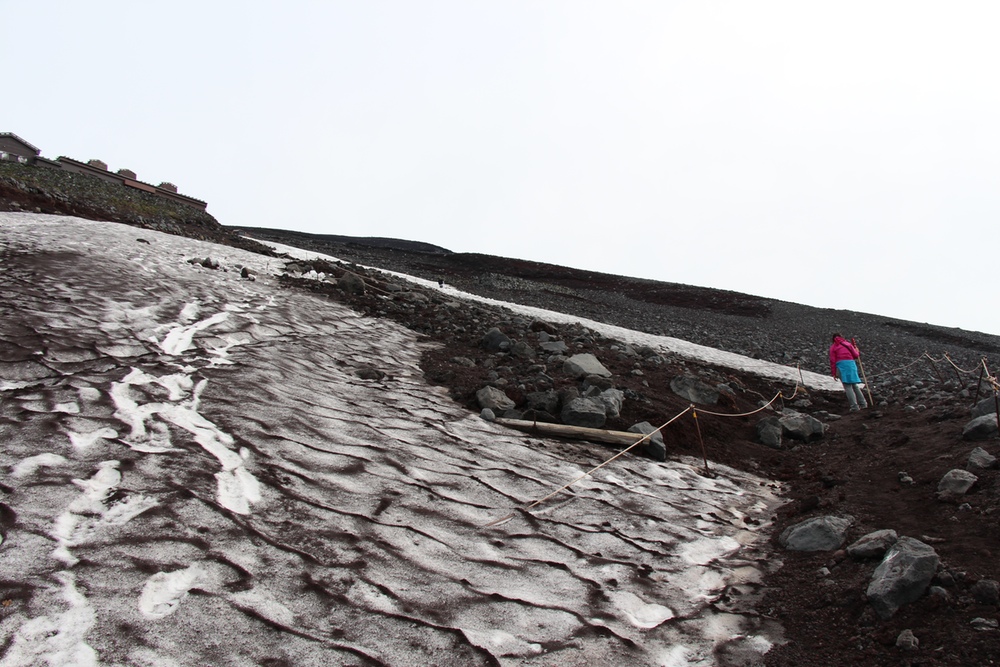
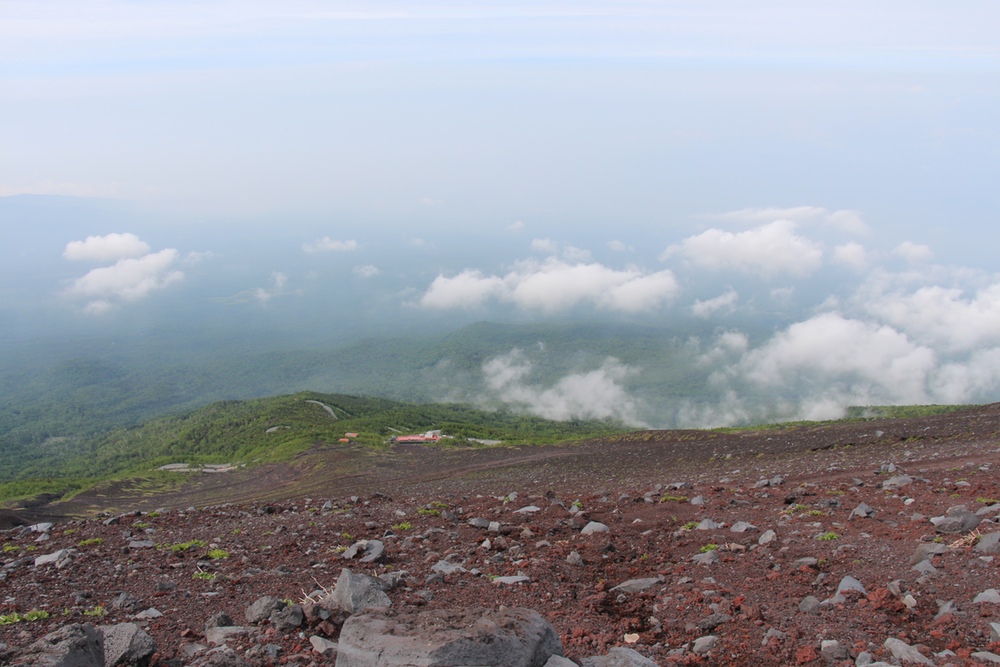
The last trail makeup that we came across wasn’t until we were on the way down. Instead of descending the same way that we had gone up, we mostly stuck to the service path that wound down the mountain. Here the soil was made up of tiny loose volcanic stones that shifted around as we walked. In fact it was so loose that it’s recommended that you wear gaiters over your boots so that you don’t get these pebbles in them as you slide down the service path. Theoretically this is how trucks can get to the top of the mountain and even though it was far smoother than the rest, I would not want to be the guy navigating a vehicle up there.

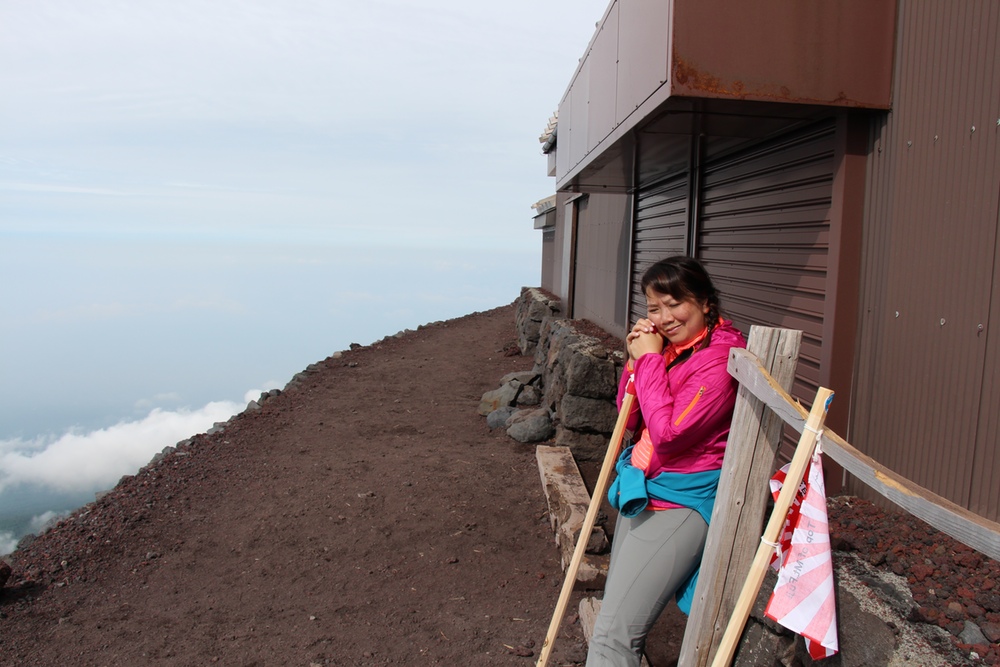
After the seventh station, things started getting tougher. We were steadily going through our water and energy bars and taking breaks much more often. Plus the trail was getting significantly steeper and several times we thought we could see the top, only to come to that point and realize that there was still a whole lot more mountain to go. With the stations closed, it was nearly impossible to tell which we were passing by and we could only guess that this one was eight or that one up on the rise, nine. Still, while this was the hardest part, it was also the most incredible. Every time I turned to look back the way we came, the view took my breath away. The sky was getting cloudier in the early afternoon but there were still gaps where we could look far, far down to see the forest below and the tiny dots of stations that we had already passed.
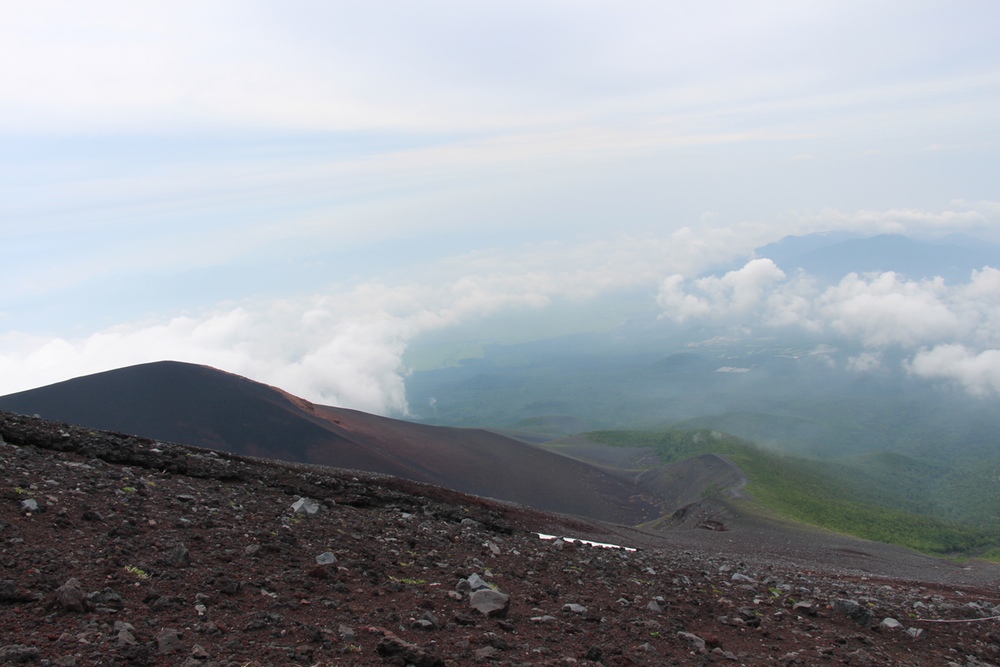
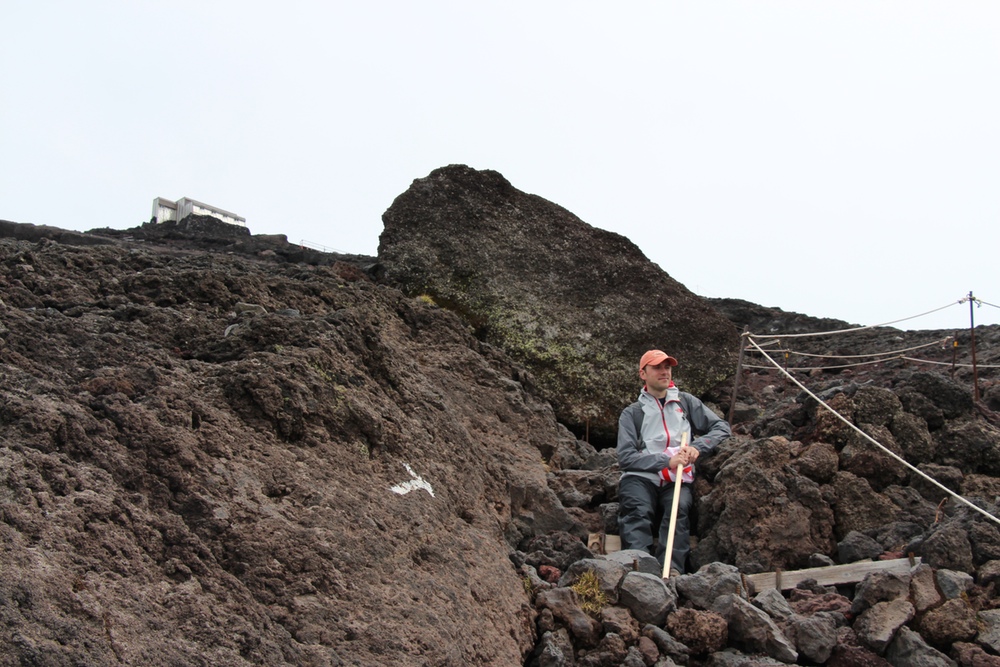

To the Summit
Finally, we glimpsed another rise that we unanimously agreed had to be the summit. But to get there, we had one last, massive patch of snow in the way. From a distance, it was a steep white blob that we saw we’d have to snake across several times before getting to the top. Sure enough, the snow here was the deepest and we had to stick to walking in the footprints of those who had gone before us. This was also the most dangerous part of the climb since it was probably the steepest, most slippery, coldest, and most remote in the event that something happened to us.
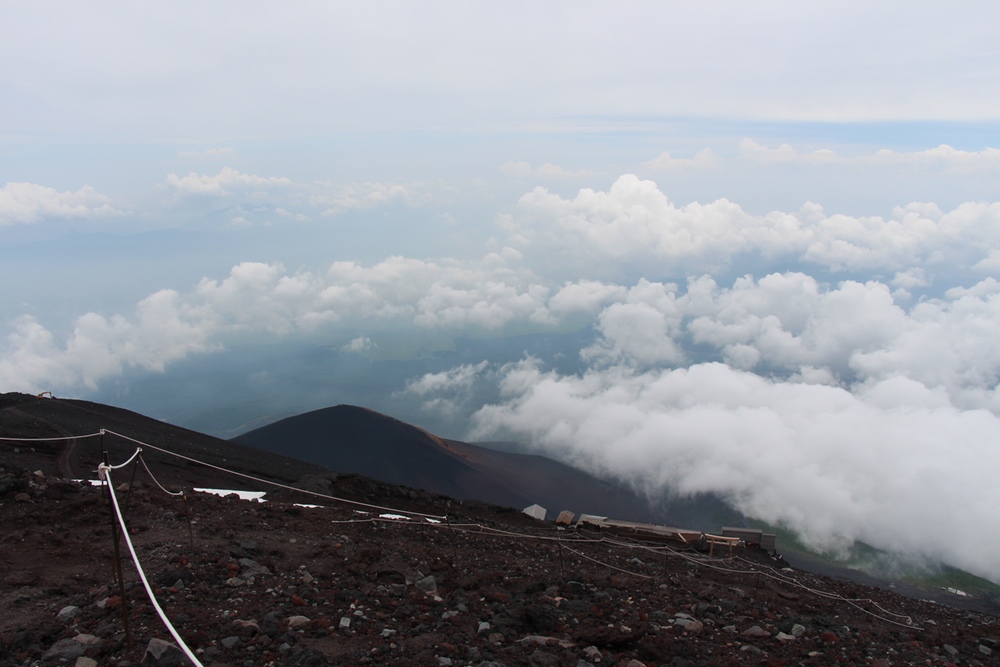


Slowly, step by step, we made it through the snow and up the last rocks until at last we went through another gate and up to the summit area… which was of course closed down like the rest of the stations above number six.
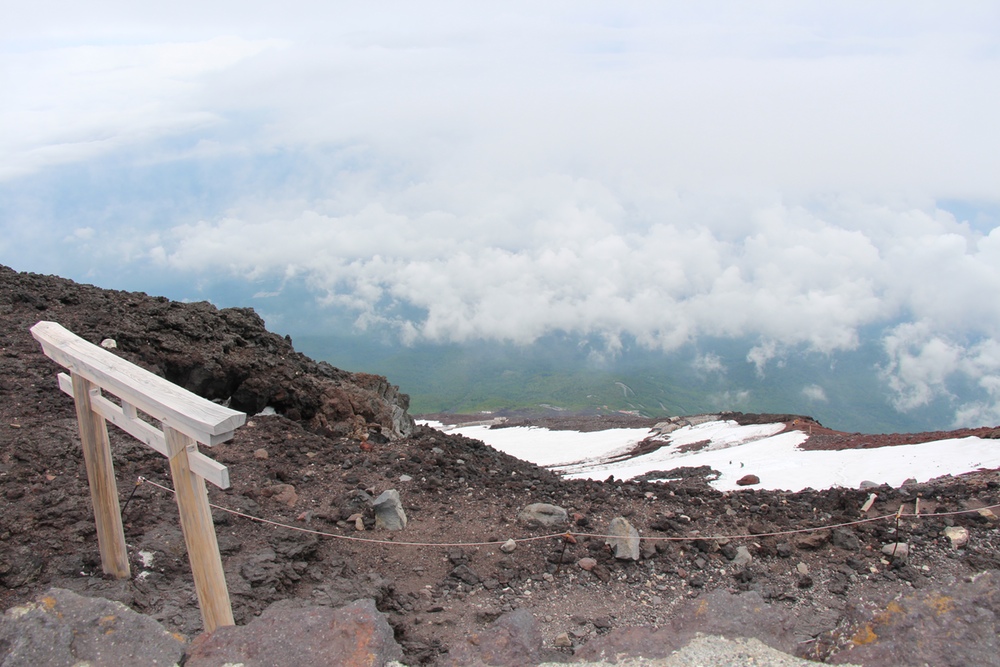

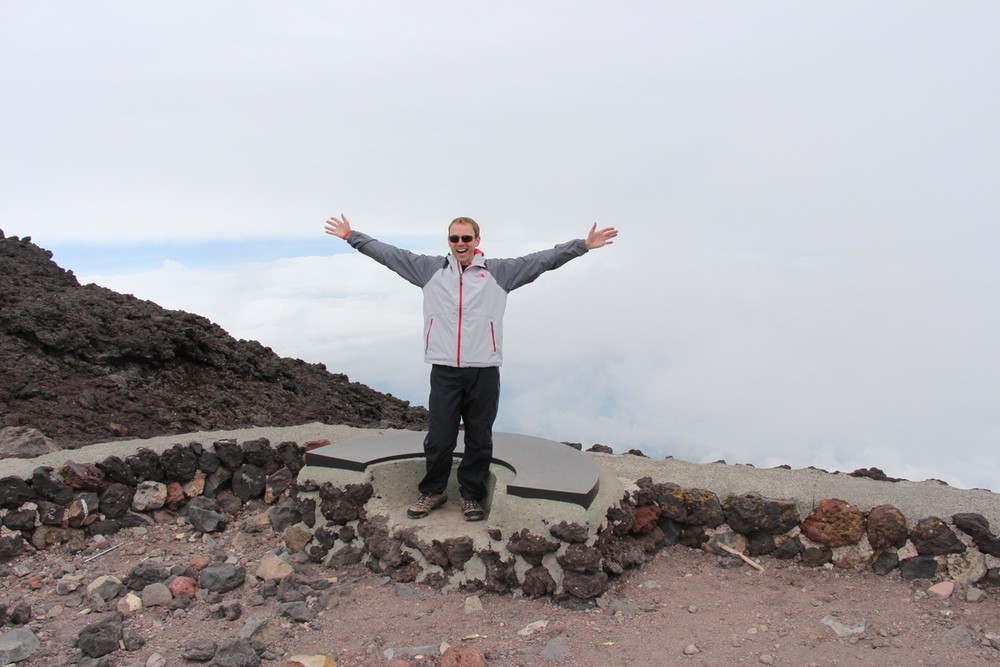
But just standing there, you could close your eyes and picture what a bustling summit would have looked like: hikers lined up at the ramen stand, then walking away and holding a bowl up to their noses to smell… others writing the last sentences on a postcard before dropping it into the mailbox so that it could actually be postmarked from the top of Mt. Fuji…But the summit we experienced was a little more subdued. The ramen shop and mailbox were closed but there were still plenty of pictures to take and of course the crater to see.
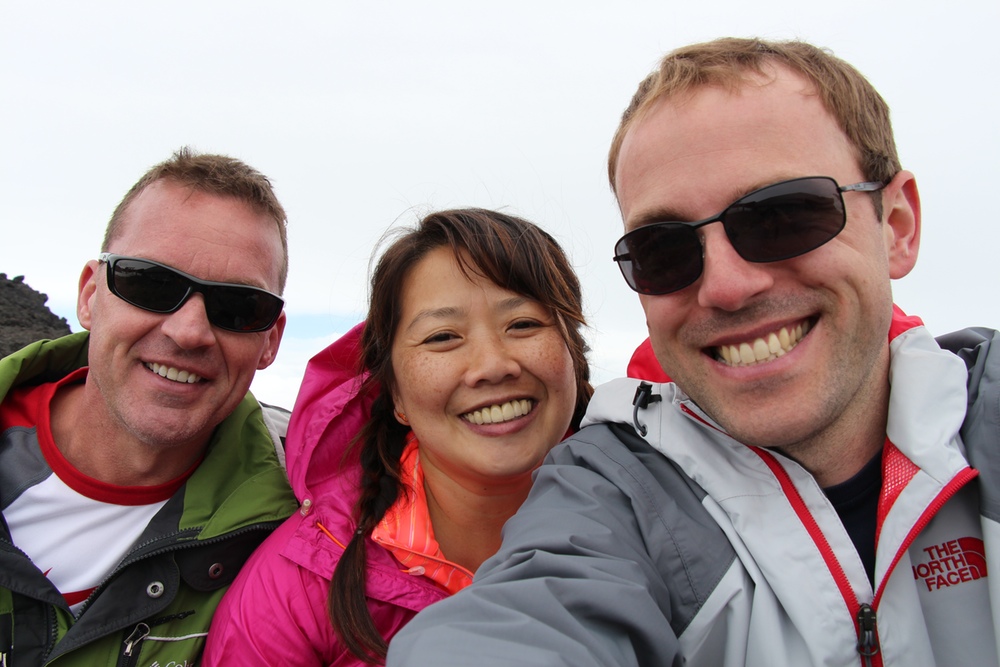

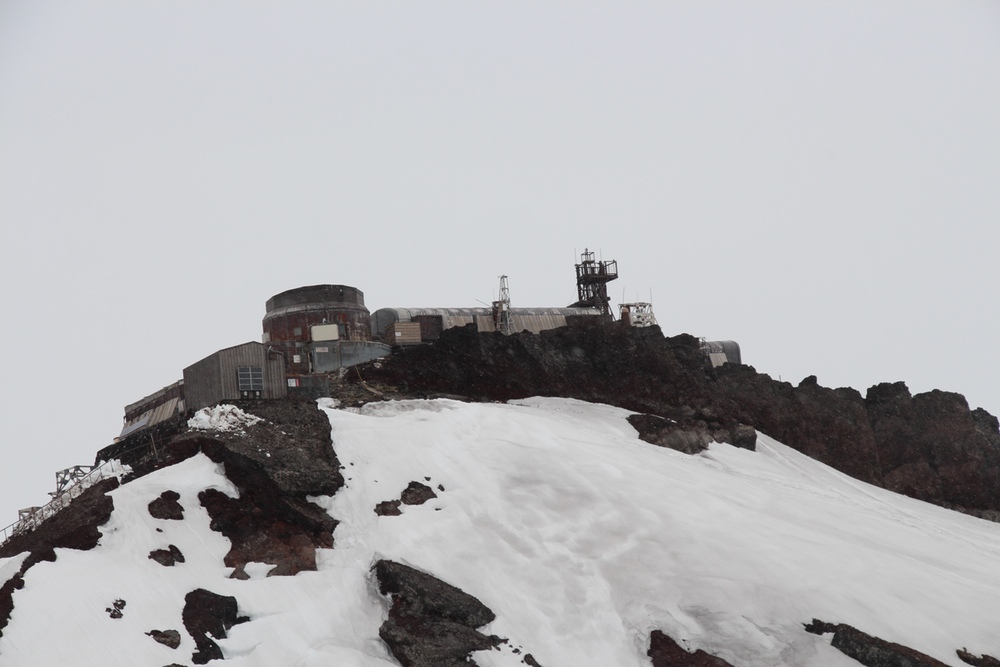
Racing the Weather Back Down
The sky was completely overcast when we arrived at the summit and after we had been there for about 20 minutes, it started flurrying. In the span of a few seconds, my reaction went from “Wow, this is so cool! I’m experiencing snow on a mountain in July!” to “…and I’m at the literal top of this mountain, before I’m even supposed to be up here, and all of the emergency stations for hours in each direction are closed.” I wasn’t the only one who felt this way and we immediately started packing up and getting ready to start back down. Since we didn’t know how bad the weather would get and really didn’t want to be (best case) medevac’d out in a helicopter or (worst case) discovered 24 hours later by the next old Japanese dude with ski poles making the trek, we opted for the service road back.
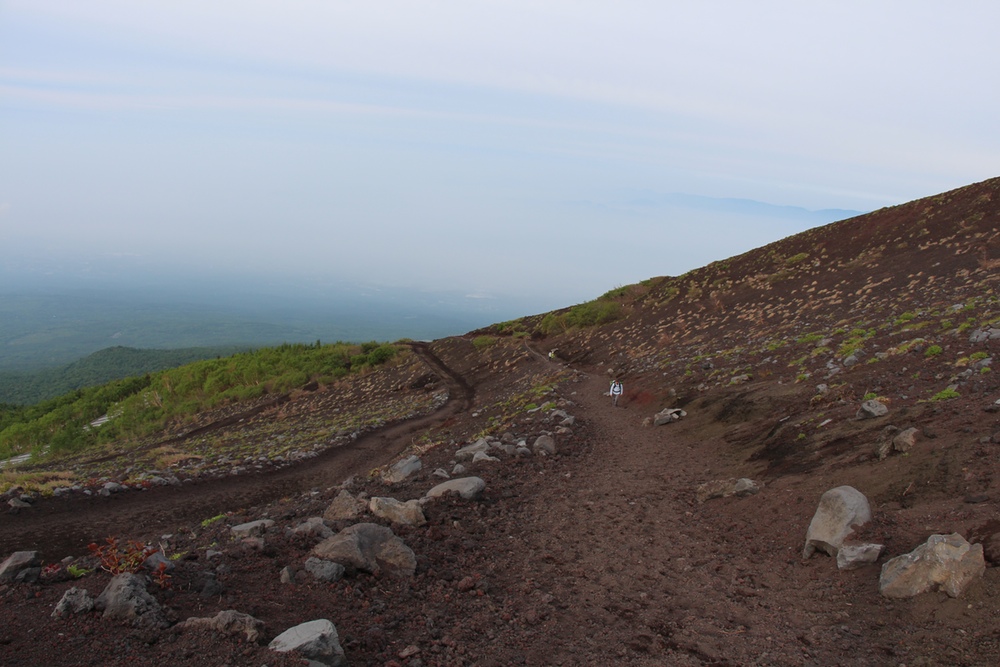

Back and fourth we wound down the service path, slipping and sliding on the loose volcanic pebbles. Though it wasn’t nearly as steep as the direct path we had taken up, there were still countless parts where we had to hold onto each other for support, otherwise we would have ended up with twisted ankles and facedown in the stones. After a few hours of this and a one or two wrong turns we came across station six (which it seemed like we had last seen days ago) and I filled back up on water for the last push to the car. Looking back the way we came, we had made it just in time since the weather was well past turning: the mountain was almost completely enveloped in fog and the higher elevation snow had long since turned into a steady light rain.
But it was over. Angele and I collapsed in the car but Quinton (sucker!) had to drive us all home. Two hours later, we were celebrating with a well-deserved ramen dinner at a restaurant by his house outside of Tokyo. It may not have been served piping hot at the summit of a bucket-list worthy mountain but if I closed my eyes and took a sip, I could imagine being back up there in the courtyard, looking down on the rocks, snow, and trees way down below. The saying may be that a fool climbs it twice but as far as I’m concerned, Fuji still owes me that bowl of ramen and all ten marks on the walking stick. I’ll take it up on that again someday.

